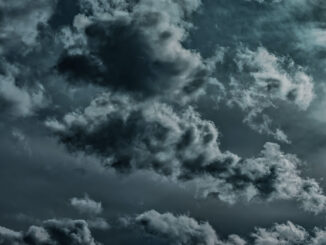
This week, the Dutch National Ballet performed for the first time ever at Jacob’s Pillow Dance Festival, and from the Ted Shawn Theatre stage, high on a mountaintop at this fabled cultural mecca in Becket, Massachusetts, the Pillow’s executive and artistic director Pamela Tatge noted how remarkable it is to bring this 62-year-old company—48 company members strong, including 34 dancers—to the Berkshires. This appearance marks the return of international companies to Pillow programming after COVID reared its ugly head and made it difficult—if not impossible—for foreign artists to perform here.
Another sign that we’re in a post-pandemic environment: the full house at the Ted Shawn Theatre. While ballet always has a strong following, a big part of the draw was to be the appearance of Russian prima ballerina Olga Smirnov, a former star of the Bolshoi Ballet who denounced Russia’s invasion of Ukraine and moved to the Netherlands to join the Dutch National Ballet in March 2022. (You can read her statement here.) Unfortunately, due to an injury, Smirnov did not dance at the Pillow. Fortunately, all who did perform on opening night did so perfectly and exuded such star quality that Smirnov’s absence did not mar an evening of exquisite dance.

The program began with the self-explanatory modern ballet “Variations for Two Couples,” which serves as a perfect introduction to the movement vocabulary of choreographer Hans van Manen, DNB’s lauded resident choreographer and—at age 90—one the world’s pre-eminent dance makers. Wearing dark-toned tank-top unitards in green, blue, and brown, the duos of dancers stride and glide across the stage, striking strong, angular stances. The stop-and-start movement resolves in arresting, mostly asymmetrical poses. The women wear pointe shoes, but are rarely on pointe. They hold deep pliés in second position as their partners slide them around in turns or across the stage. Another arresting move: a woman in a physiology-defying split, with one heel of an eccentrically flexed foot on the floor, being towed around as she holds the extended diagonal position.
With so much gliding in the steps, at times it seems as if the dancers are skating, a fun coincidence given that Ice Dance International—a company of figure skaters who perform on a special stage material that enables them to skate no matter the weather—was also engaged at the Pillow this week on the outdoor Henry J. Leir Stage. The choreography’s fierce stances and angularity bring to mind a deconstructed tango, even before the final movement to Astor Piazzolla’s Melodia en la menor (Canto de Octobre). (The first three movements are set to music by Benjamin Britten, Einojuhani Rautavaara, and Stevan Kovacs Tickmayer.)

Van Manen clearly has an affinity for the tango—and for Piazzolla— in that this classic dance from Argentina is the jumping-off point for “5 Tango’s,” the last dance on the program, set to five pieces by the iconic tango composer. Interestingly, there’s little of tango’s flowing sensuality in this work; indeed, the 14 dancers keep some distance between them, even while partnered, and the movements are largely stop and go. (The exception is a pas de deux for two men, the piece with the most languorous mien.) Throughout the work, the women stand out, looking like red queens from a pack of cards in short black dresses with red accents, in contrast to the men, wearing black from head to toe, frequently fading into the dark backdrop. One segment features a cadre of male dancers with one woman, and rather than getting tossed around like an object (as happens all too often in contemporary choreography), she holds the power, fierce and confident, with the men serving as a backdrop for her dancing, and only dancing with her when she chooses.

As in “Variations for Two Couples,” we see a lot of angularity and asymmetry—particularly in an exaggerated both-hands-on-one-hip, elbows pointing out the side posture used throughout the piece—and gravity heavily factors into this largely grounded dance. Still, the dancers do get aloft—especially the men, who execute some bravura leaps and turns. In one segment, set to Vayamos al diablo, the male soloist soars. At times, the men’s choreography brings to mind Jerome Robbins’s iconic dance to the song “Cool” in West Side Story.

My partner and I both thought that the men got all the best moves in this evening of dance, except in “Grand Pas Classique,” a demanding pas de deux from 1949 by Russian choreographer Victor Gsovsky. In accordance with the norm of classical ballet, the male dancer largely serves the female: supporting her stunning arabesques and pirouettes, lifting and carrying her, escorting her delicate steps on pointe across the stage, and in general, framing her elegant feats of balance, flexibility, speed, and impeccable line. Still, the man does get the chance to shine in his own right during his solo, matching her graceful, spin-filled segment with his own star turn featuring fleet footwork, feats of flexibility, soaring grands jetés, jumps, and tours en l’air, all flawlessly executed with no visible signs of exertion—both dancers effortlessly soar as if they were as light as air.

The men really get the chance to cut loose in van Manen’s “Solo,” apparently a last-minute addition to the evening that wasn’t listed in the program on opening night. Reminiscent of the solos taken by musicians in a rock or jazz band, three men attired in bright purple tops and white tights—each with a different contrasting color peeking out from under their shirts—take turns challenging each other in brief bursts of dance, each giving it all they’ve got, taking center stage under bright lights and trying to outdo each other in height, speed, power, and suppleness, handing it off to each other with a self-satisfied glance as they saunter off the stage, culminating in a full-out dance blast with all three on stage; they all manage to execute pyrotechnic moves with no sacrifice to form.

In contrast, “Two and Only,” a male duet by Wubkje Kuindersma set to songs by sonorous singer-songwriter Michael J. Benjamin, was a subdued dance conveying the many aspects of love—the most narrative piece on the program, and the most tender. Performed with longing, ardor, and guardeness by two shirtless men in dark pants on a dark stage, subdued lighting design also helped set the tone; shifting circles of light echoed the course of the relationship, subtly marking when the the men were apart from each other or coming together.

For me, one of main draws of this program was the inclusion of a piece by the great expat American choreographer William Forsythe. Forsythe is known for his iconoclastic, postmodern approach to ballet, and I try to see his work any chance I get. In his offering, “The Vertiginous Thrill of Exactitude” (set to Schubert’s “Allegro Vivace” from Symphony No. 9 in C Major), the promise made in the title is kept; the five dancers—three women and two men—perfectly executed a relentless onslaught of rapid-fire, demanding classical moves in a way that winked at tradition. The women sported ridiculous, stiff, disk-like chartreuse tutus, tipping off the audience that humor is built into this piece. So do the exaggerated—almost maniacal—smiles plastered on the dancers’ faces despite the demands of the fast-paced choreography, which they perform with remarkable precision, speed, and perfect form. You can catch the humor in very subtle moves, as when a female dancer, for a brief moment, assumes an awkward, concave shape, or there’s a quick ankle wobble built into a move, so fleeting that you ask yourself if it really happened. Then these weird moves recur, exactly as before, confirming it’s intentional.

While the women in their bright tops and tutus grab the attention, once again the men get their share of the best moves. Dressed in short red unitards, they effortlessly launch skyward, soaring in nonstop grand allegro, suspended in arresting asymmetrical shapes, repeatedly breaking the bonds of gravity. Both men demonstrated the speed, power, and exacting form demanded by this piece; I was particularly blown away by Davi Ramos, who was mind-bogglingly buoyant.
Overall, this was an evening of exceptional dance. For the Dutch National Ballet, the dancers’ skill is like table stakes—there’s no question that a unison segment will be in perfect unison, or that all moves will be executed with finesse. The program presented at Jacob’s Pillow has a little something for all dance lovers: classic dance for traditionalists, and more modern works for fans of contemporary dance. By choosing works that highlighted male dancers, DNB nodded to the Pillow’s heritage, echoing the legacy of Ted Shawn and his Men Dancers. Whether intentional or not, DNB has found a new fan base in the Berkshires.
The Dutch National Ballet appears at Jacob’s Pillow Dance Festival in Becket, Massachusetts, July 5–9.




Be the first to comment